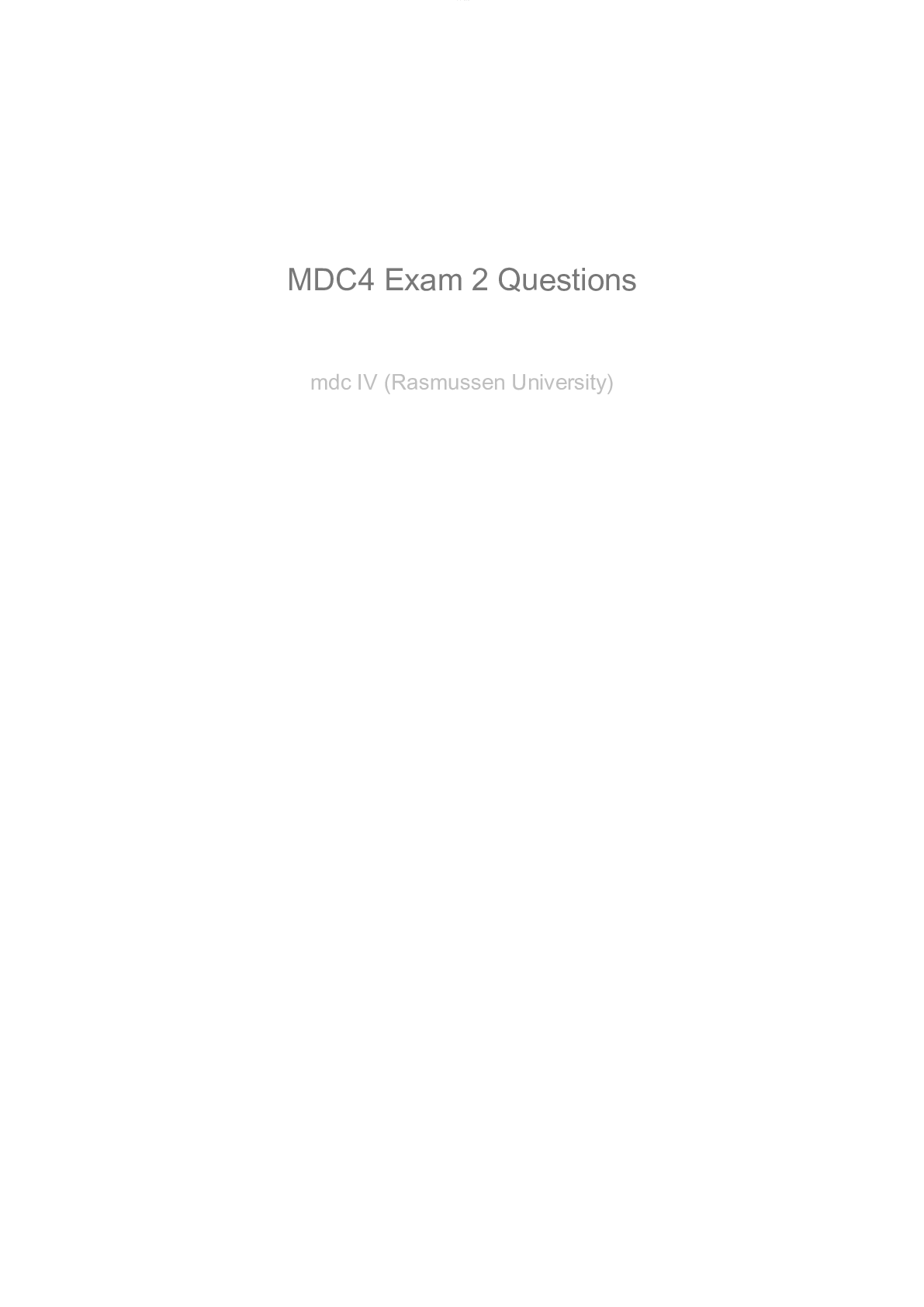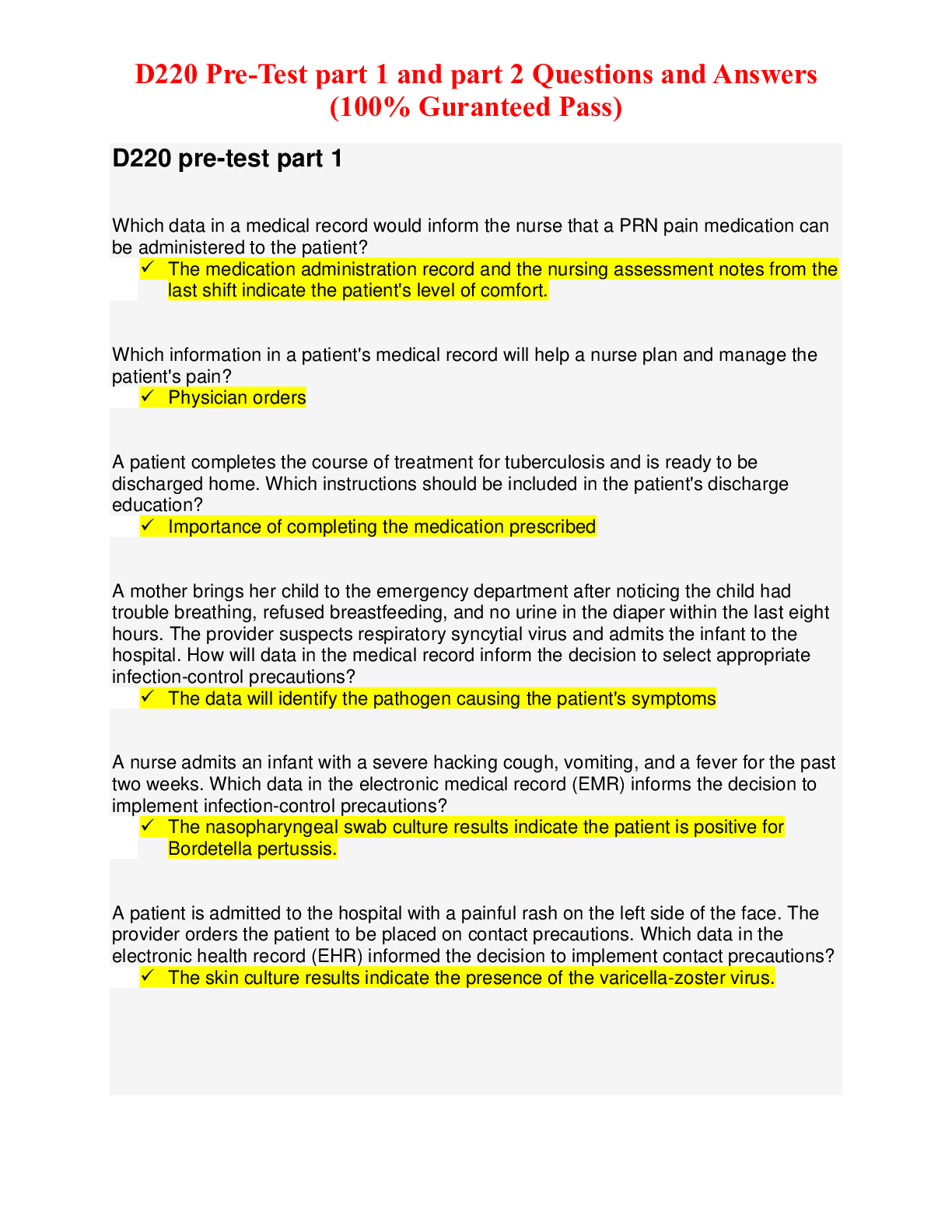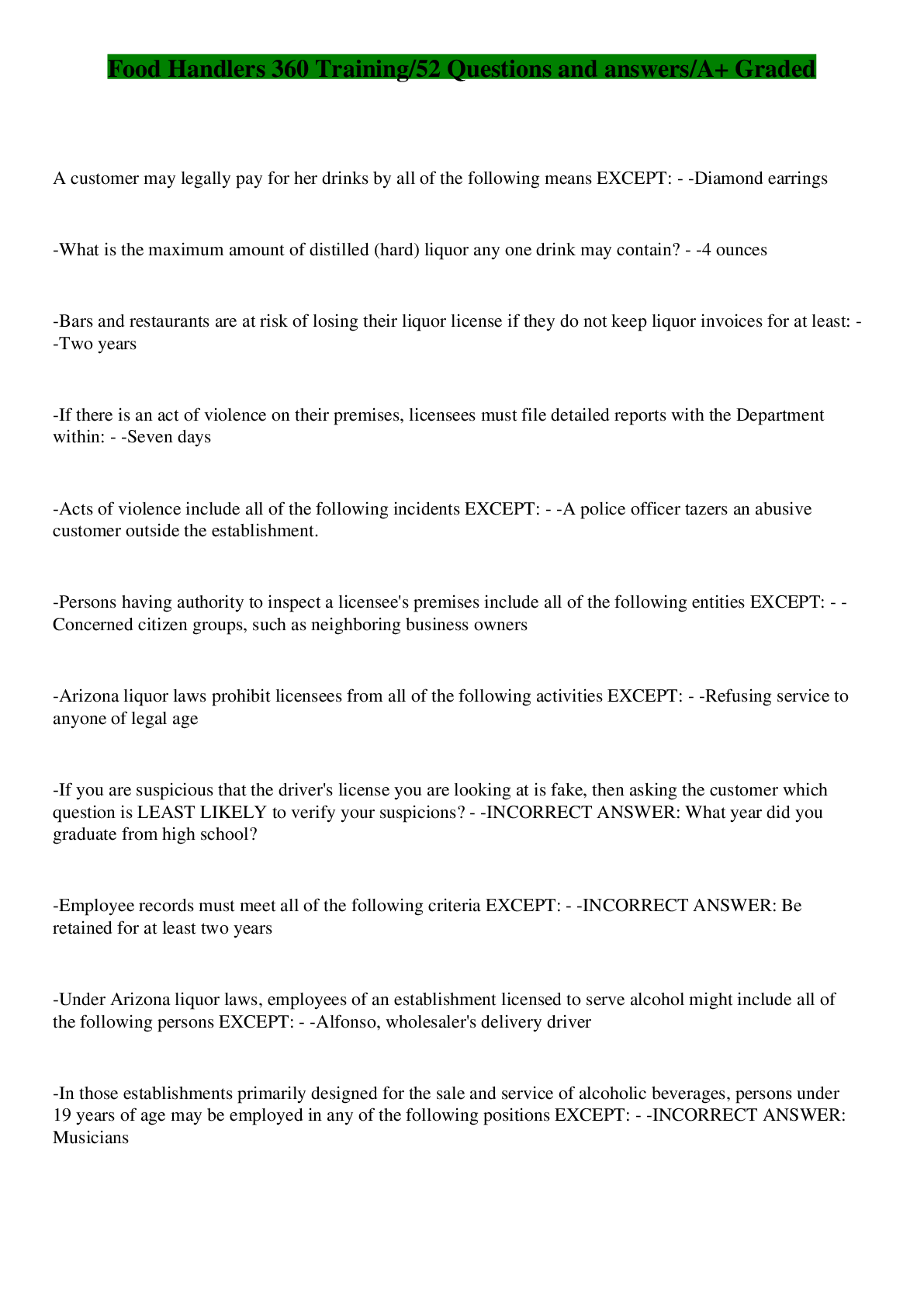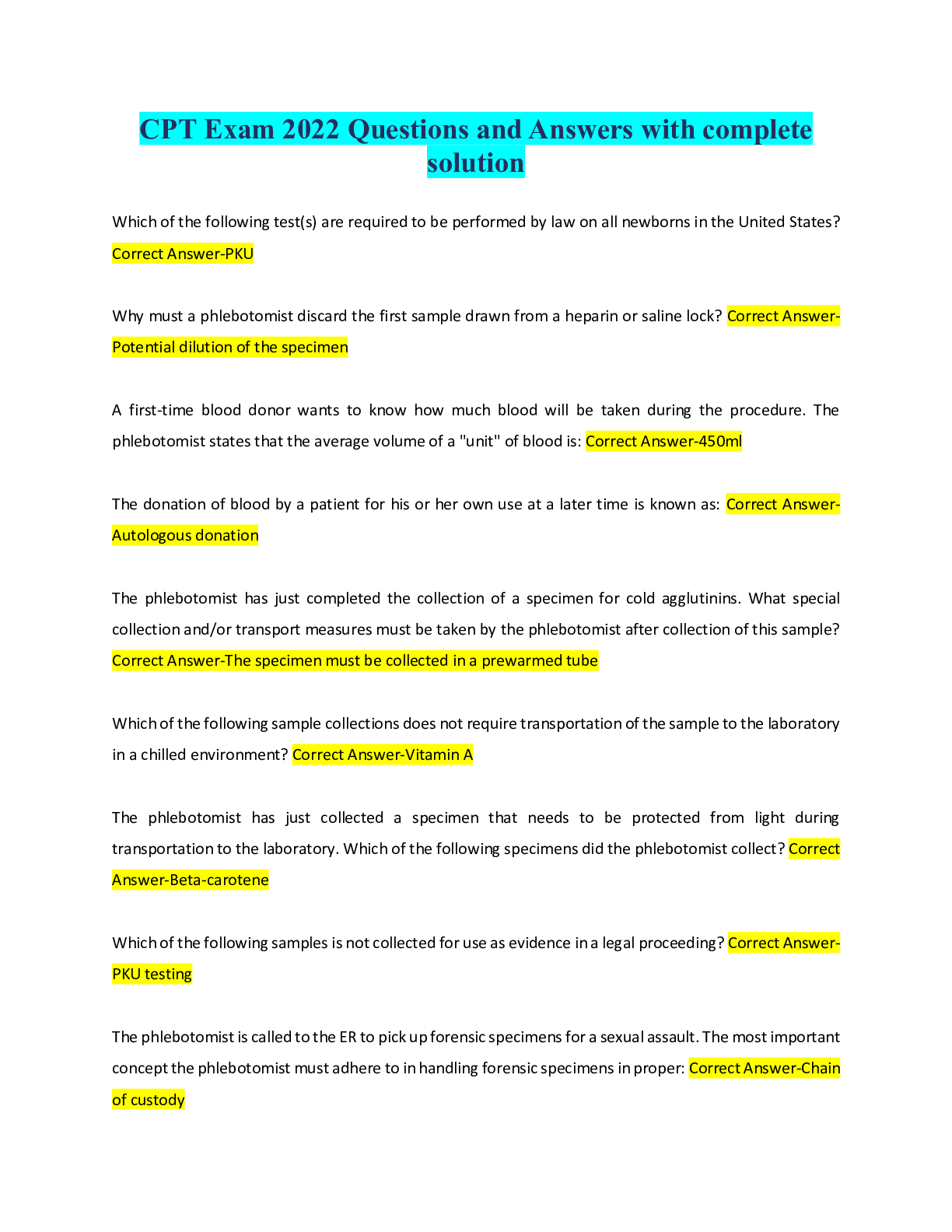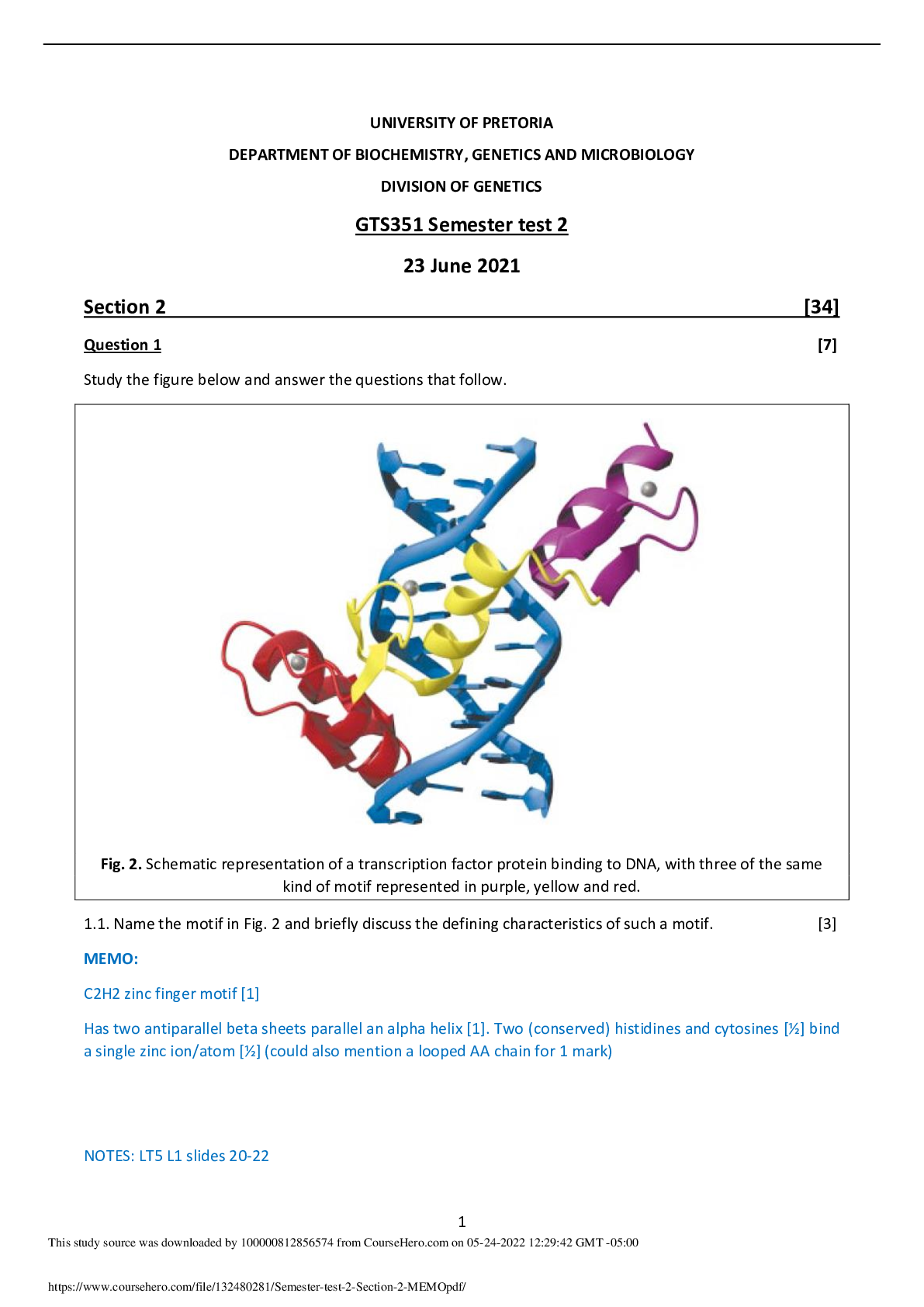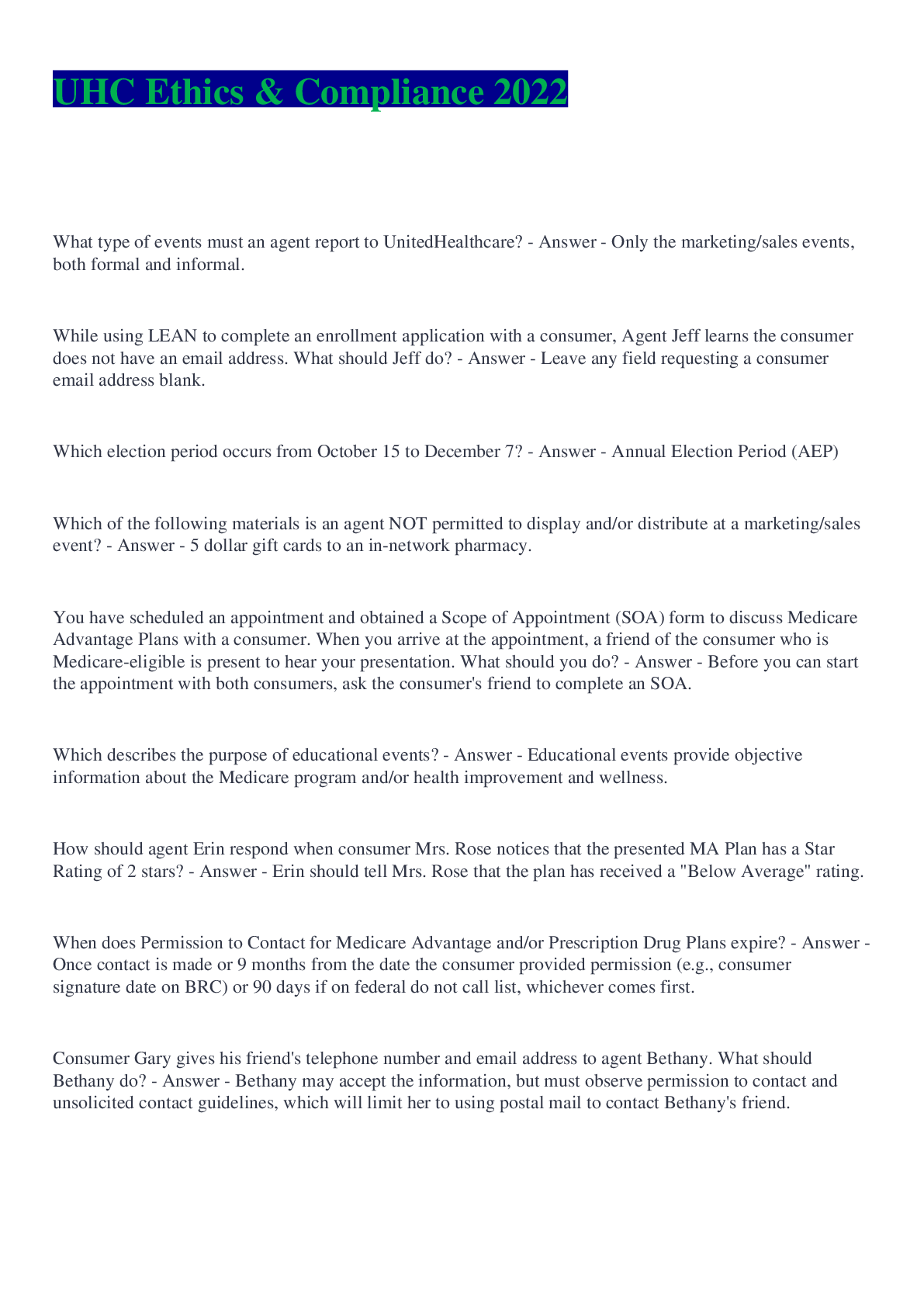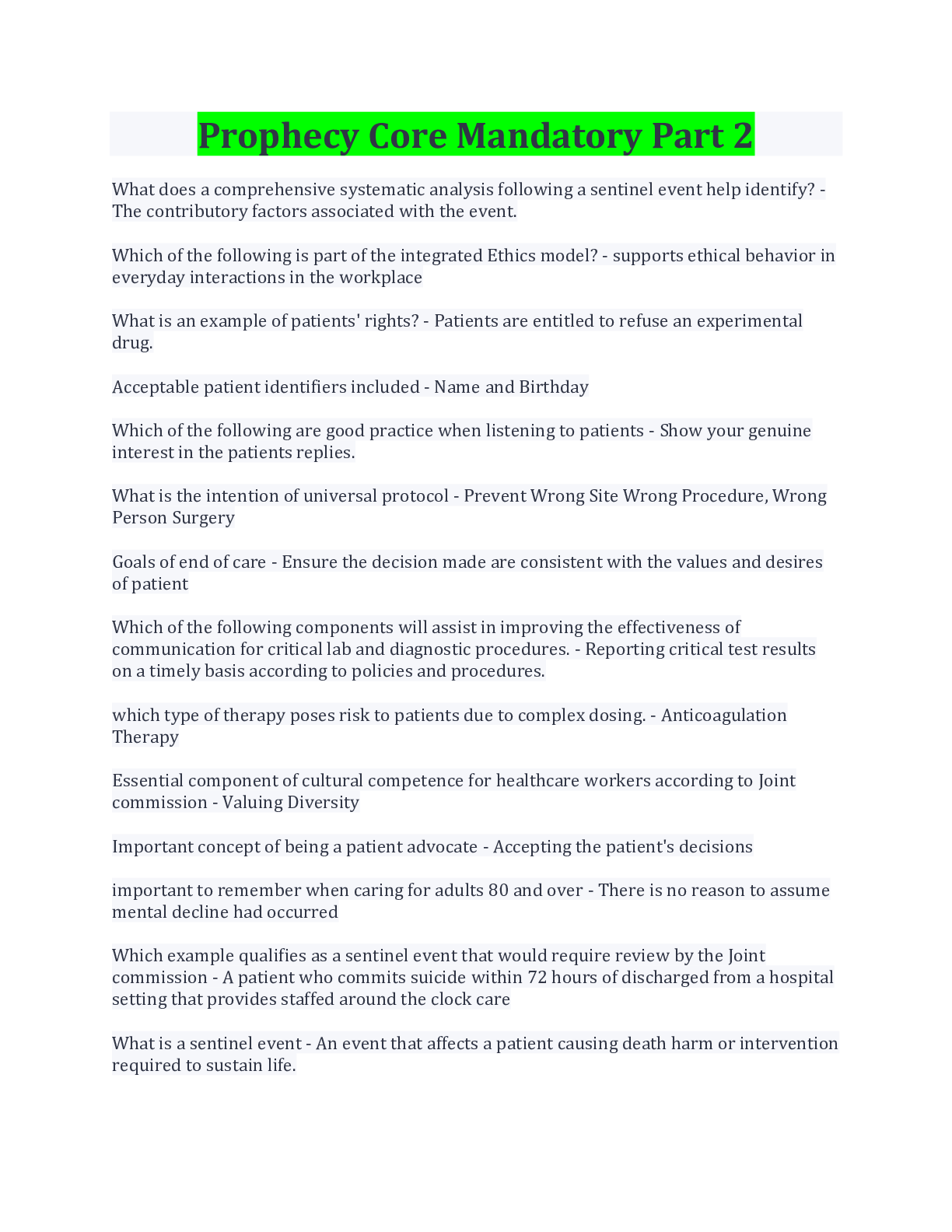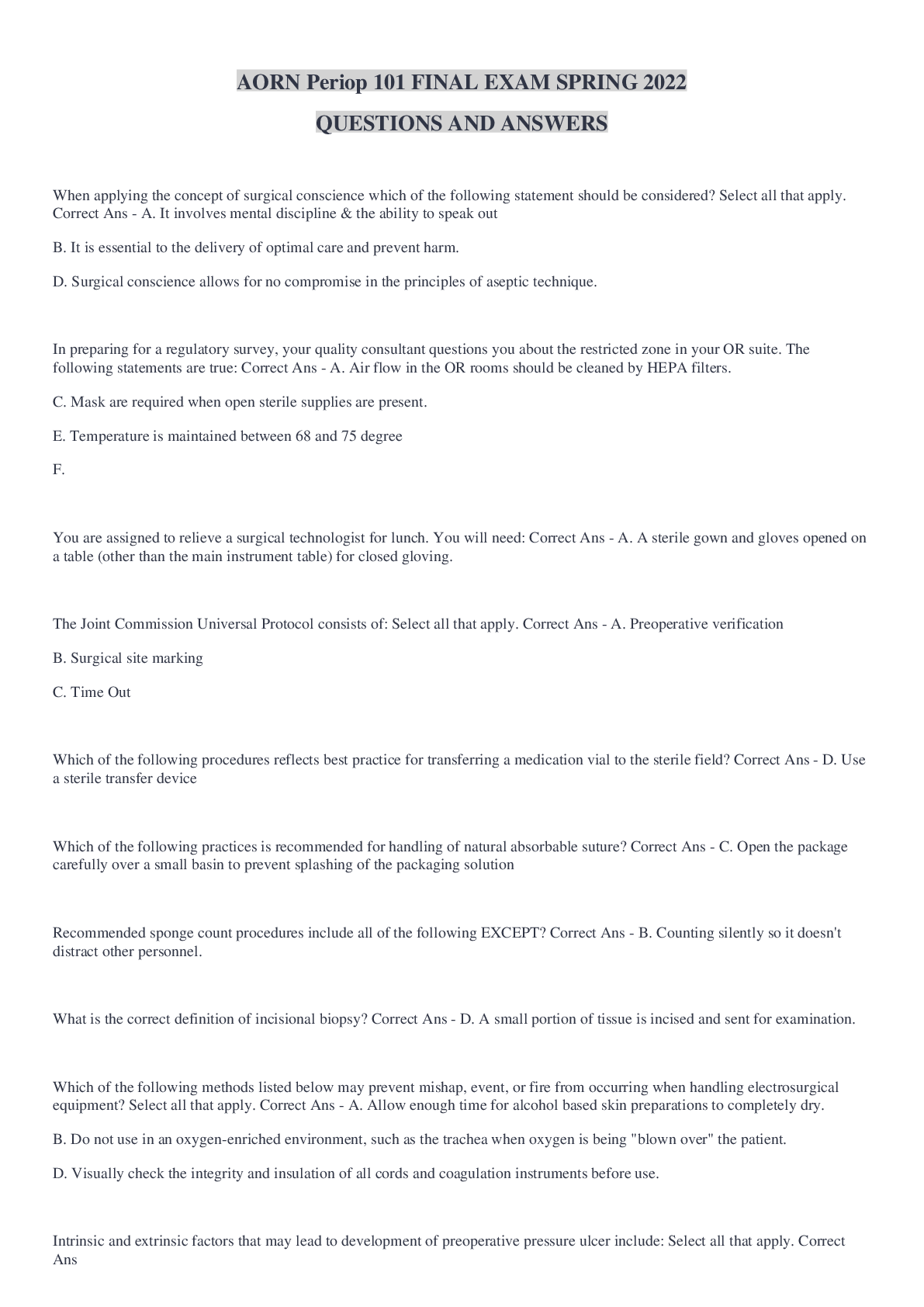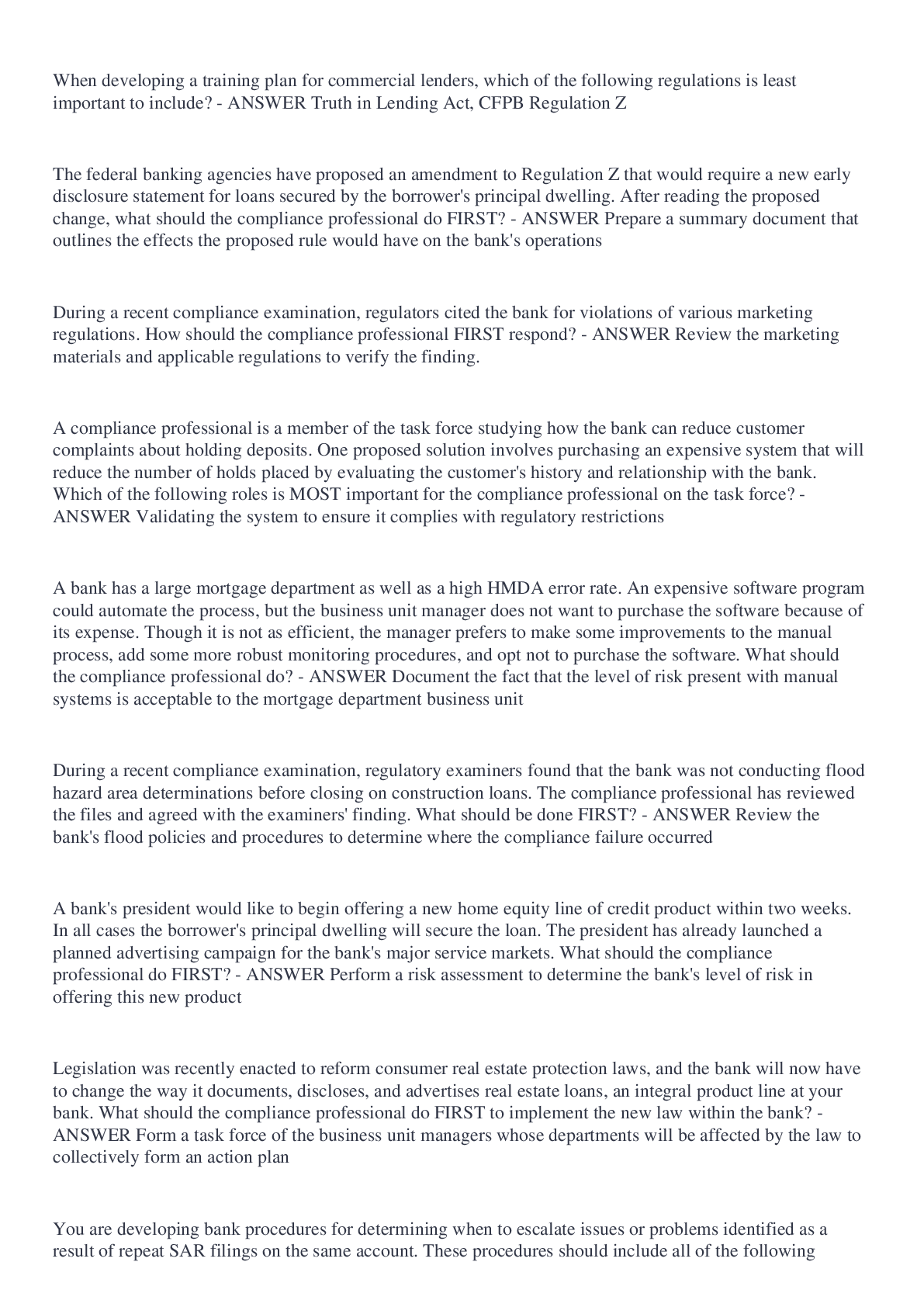ESB TEST 2 QUESTIONS AND ANSWERS| GRADED A
Document Content and Description Below
ESB TEST 2 Research Process Correct Answer: Question, design, findings, publishing True Experiment Correct Answer: designs in which the researcher manipulates ALL independent variables; total ... control over who's in what group Quasi Experimental Design Correct Answer: designs in which random assignments cannot be used Quasi Independent Variables Correct Answer: variables treated as if they were independent variables in the experimental design even though the researchers did not manipulate them Self Reports Correct Answer: any measurement technique that directly asks a participant how they think/feel Advantages of Self Report Correct Answer: inexpensive, easily administered, firsthand info from the source Disadvantages of Self Report Correct Answer: social desirability concerns, potential demand characteristics (wanting a specific result like on buzzfeed quiz), possible retrospective bias Behavioral Measure Correct Answer: a measure of a participant's actions in a research design, must be able to operationally define and measure participants' behavior (Behavioral trace/observation/choice) Raw Score Correct Answer: the actual score; trace score + error True Score Correct Answer: what your score would be if the test was a perfect measure of that attribute and uninfluenced by any extraneous factors Error Correct Answer: extraneous influences that will cause the raw score to deviate from the true score; (random error + bias)/systematic error Random Error Correct Answer: variation from the measure's true score due to unsystematic or chance factors, present if you get different results when the same measure was used multiple times Systematic Error Correct Answer: aka bias, error that consistently pushes scores in a given direction, worse than random error bc leads to inaccurate conclusions Strategies for Minimizing Error Correct Answer: standardization of experiments, reduce scorer biases Observer/Scorer Bias Correct Answer: misinterpreting an observation based on the researcher's existing beliefs, previous experiences, expectations, etc Ceiling Effect Correct Answer: occurs when the upper boundary of a measurement tool is set too low, leading everyone to select the highest response Floor Effect Correct Answer: occurs when the lower boundary of a measurement tool is set too high, leading everyone to select the lowest response Reliability Correct Answer: stability or consistency of a measure Validity Correct Answer: the degree to which a tool measures what it claims to; to be valid, a measure must first be reliable Population Correct Answer: the entire group of interest in a research study from which a sample is drawn Sample Correct Answer: a subset of the population from which the researcher collects data Sampling Plan Correct Answer: explicit strategy used for recruiting participants from the population; goal is to represent the population you are sampling Probability Sampling Method Correct Answer: everyone in the population of interest has an equal chance of being recruited Simple Random Sampling Correct Answer: participants are randomly selected from the population Strata Random Sampling Correct Answer: subset is randomly selected from various subpopulations or categories Cluster Random Sampling Correct Answer: dividing the total population into groups and randomly selecting which groups participate Non Probability Sampling Correct Answer: everyone in a population of interest does NOT get an equal chance of being recruited, creates bias Convenience Sampling Correct Answer: nonrandom selection of participants readily available to the researcher Quota Sampling Correct Answer: freely choosing any participant as long as they meet an established quota Purposive Sampling Correct Answer: sample chosen based on who the researcher thinks would be appropriate for the study Snowball Sampling Correct Answer: existing study participants recruit future participants from among their acquaintances Non Responsive Bias Correct Answer: a potential systematic difference between those who refused to participate in a study and those who did, difficult to determine nature/extent Volunteer Subject Problem Correct Answer: those who volunteer to participate may be characteristically different from those who choose not to participate Steps for Research Correct Answer: review the literature, formulate a research question, pick a design, pick data collection technique Qualitative Research Correct Answer: a generic term representing a variety of methodologies that focus on obtaining an in-depth account of participants' perspectives Quantitative Research Correct Answer: a generic term for methods that seek to objectively examine associations between variables, predict outcomes, and make comparisons Mixed Methods Correct Answer: a blend of qualitative and quantitative that capitalizes on strengths of each to examine a research question from multiple perspectives Top-Down Approach Correct Answer: theory based prediction --> gather info --> confirm or reject prediction Bottom-Up Approach Correct Answer: gather info --> explore themes and patterns --> formulate theory Situated Analysis Correct Answer: approach where researcher examines a topic while it is embedded within its naturally occurring context Holistic Analysis Correct Answer: approach where the researcher examine how numerous properties contribute to patterns within the larger and more complex system Archival Data Correct Answer: data that have already been collected in a naturally occurring setting, can enable the study of otherwise impossible or difficult to study variables Focus Groups Correct Answer: can show how people interact, resolve conflict, etc Interview Correct Answer: allows researcher to build a relationship with interviewee, increasing trust; gives more autonomy over wording/sequence of questions, allows for follow up questions, similar disadvantages to self report Structured Interview Correct Answer: researcher prepares specific questions prior to the interview and asks them in a standardized, fixed order with little or no probing Unstructured Interview Correct Answer: researcher may anticipate potential topics but does not plan specific questions/order; allows interviewer to probe/promote elaboration [Show More]
Last updated: 1 year ago
Preview 1 out of 7 pages
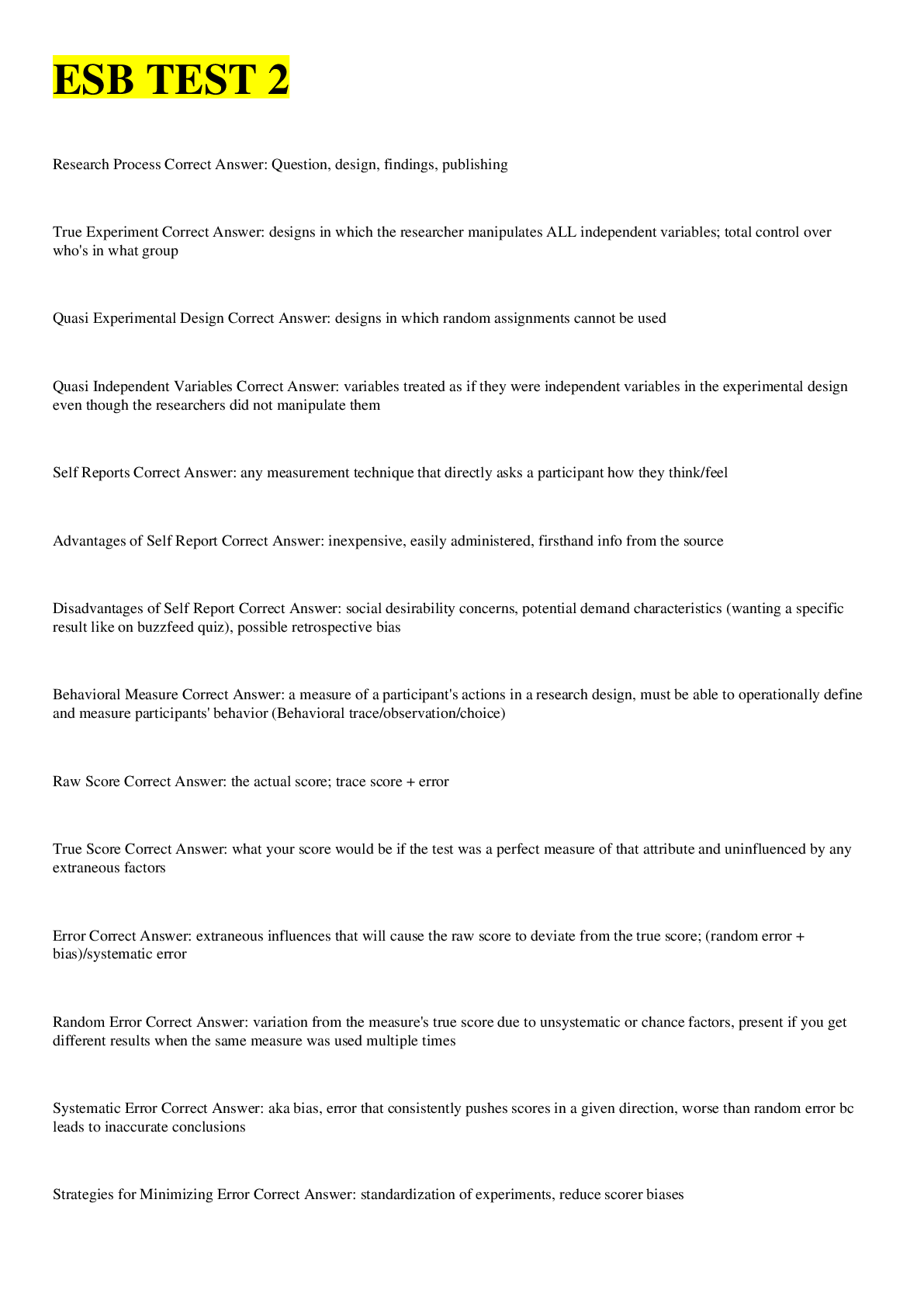
Reviews( 0 )
Document information
Connected school, study & course
About the document
Uploaded On
Jul 12, 2022
Number of pages
7
Written in
Additional information
This document has been written for:
Uploaded
Jul 12, 2022
Downloads
0
Views
43


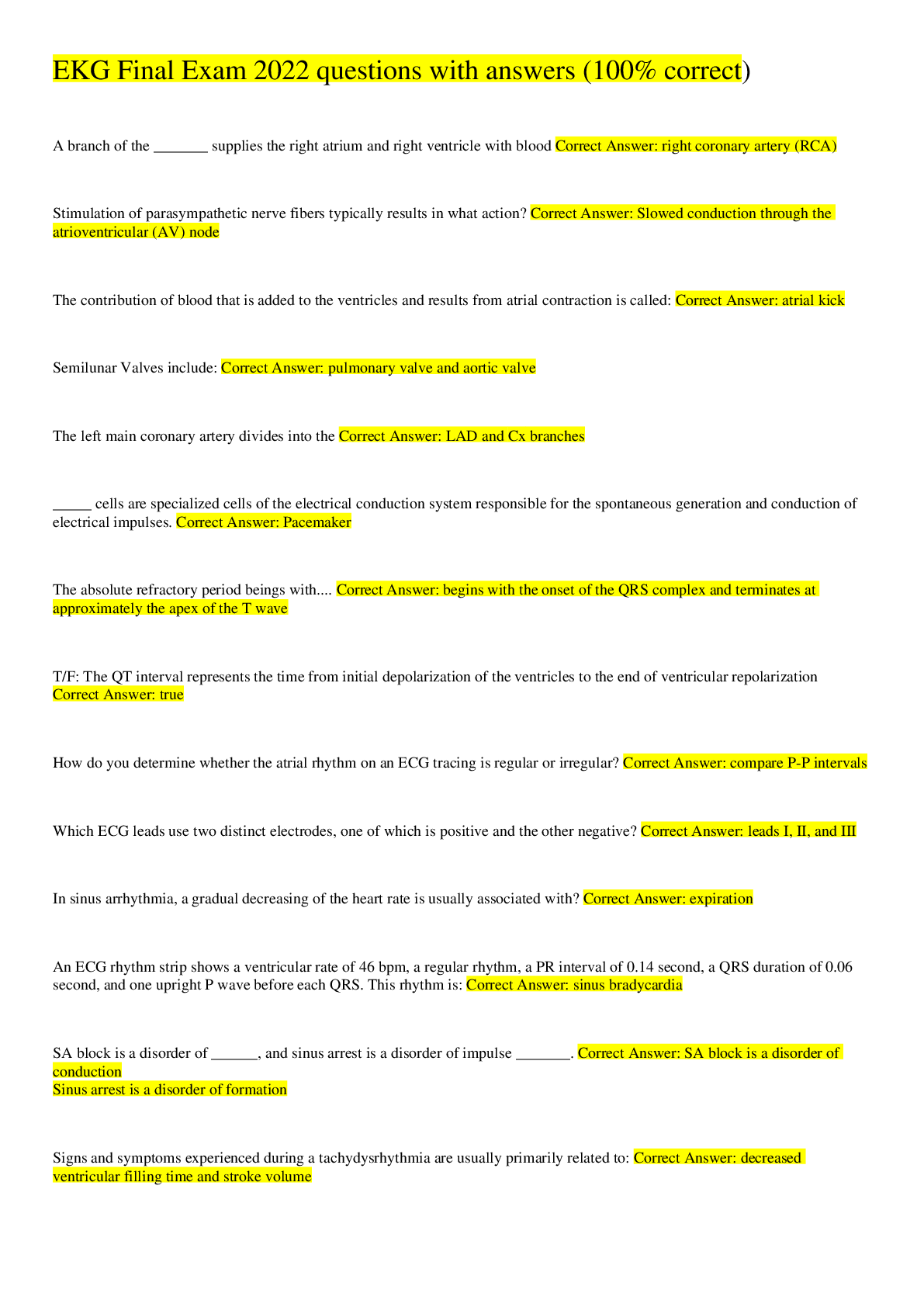
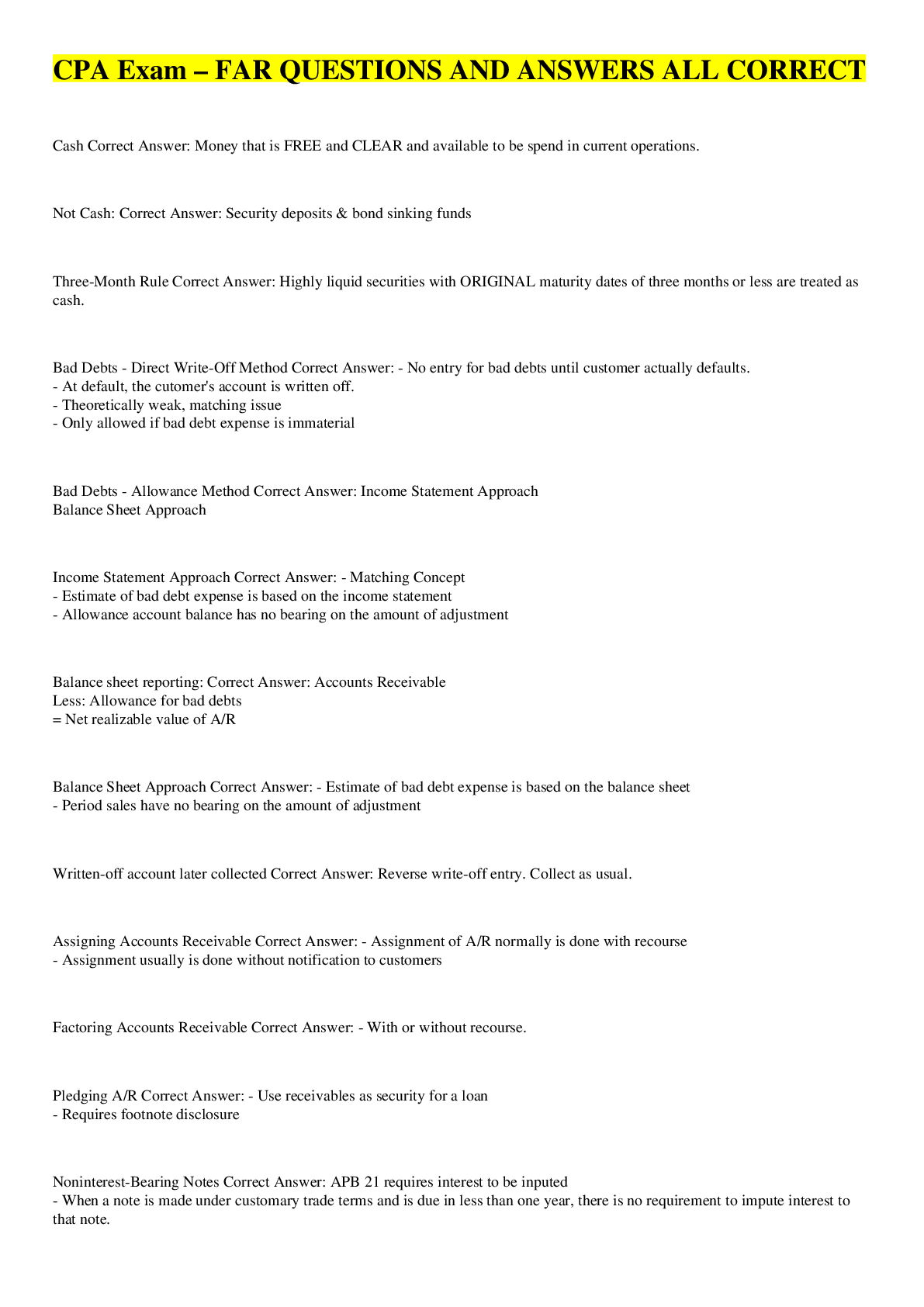
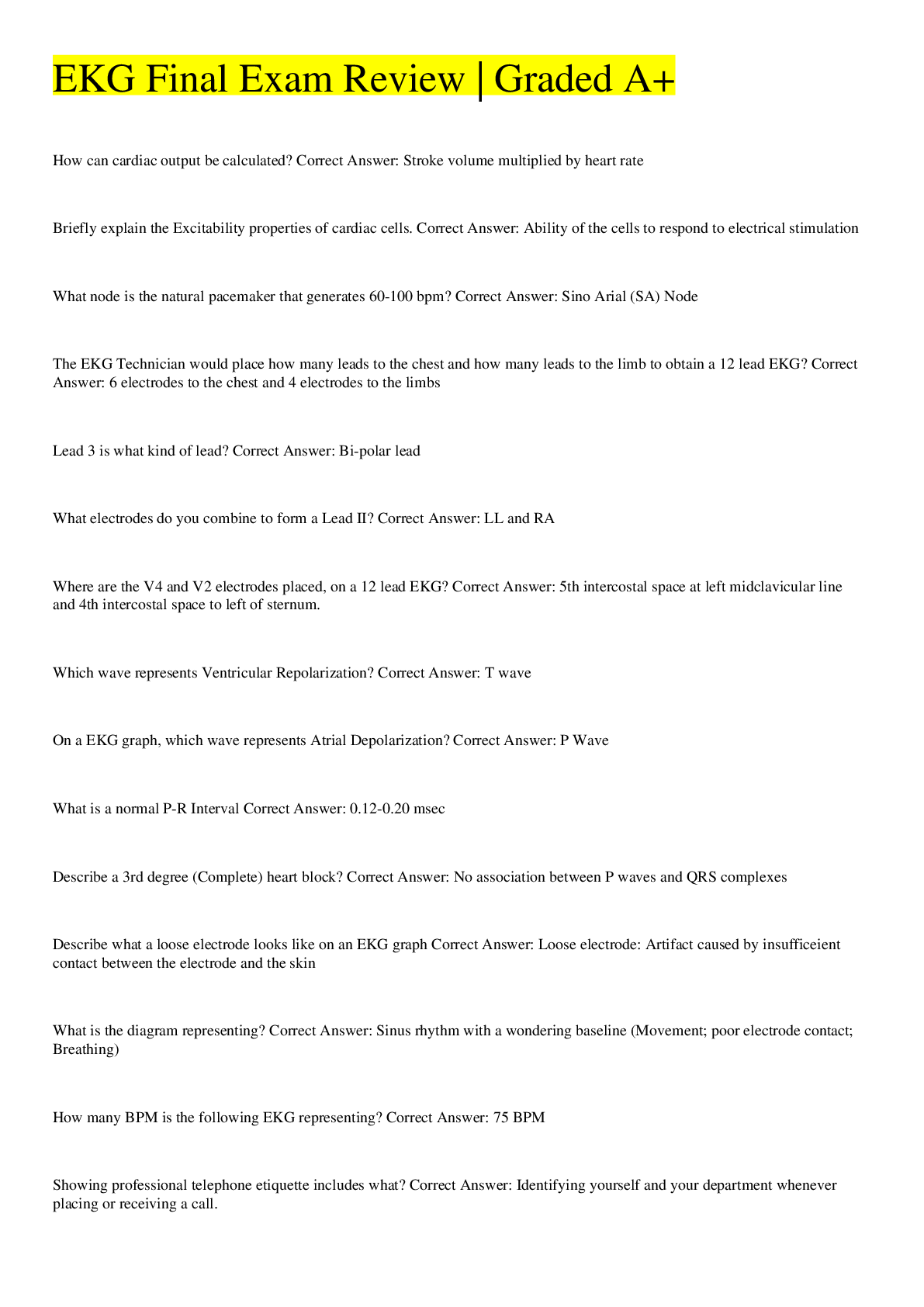
.png)

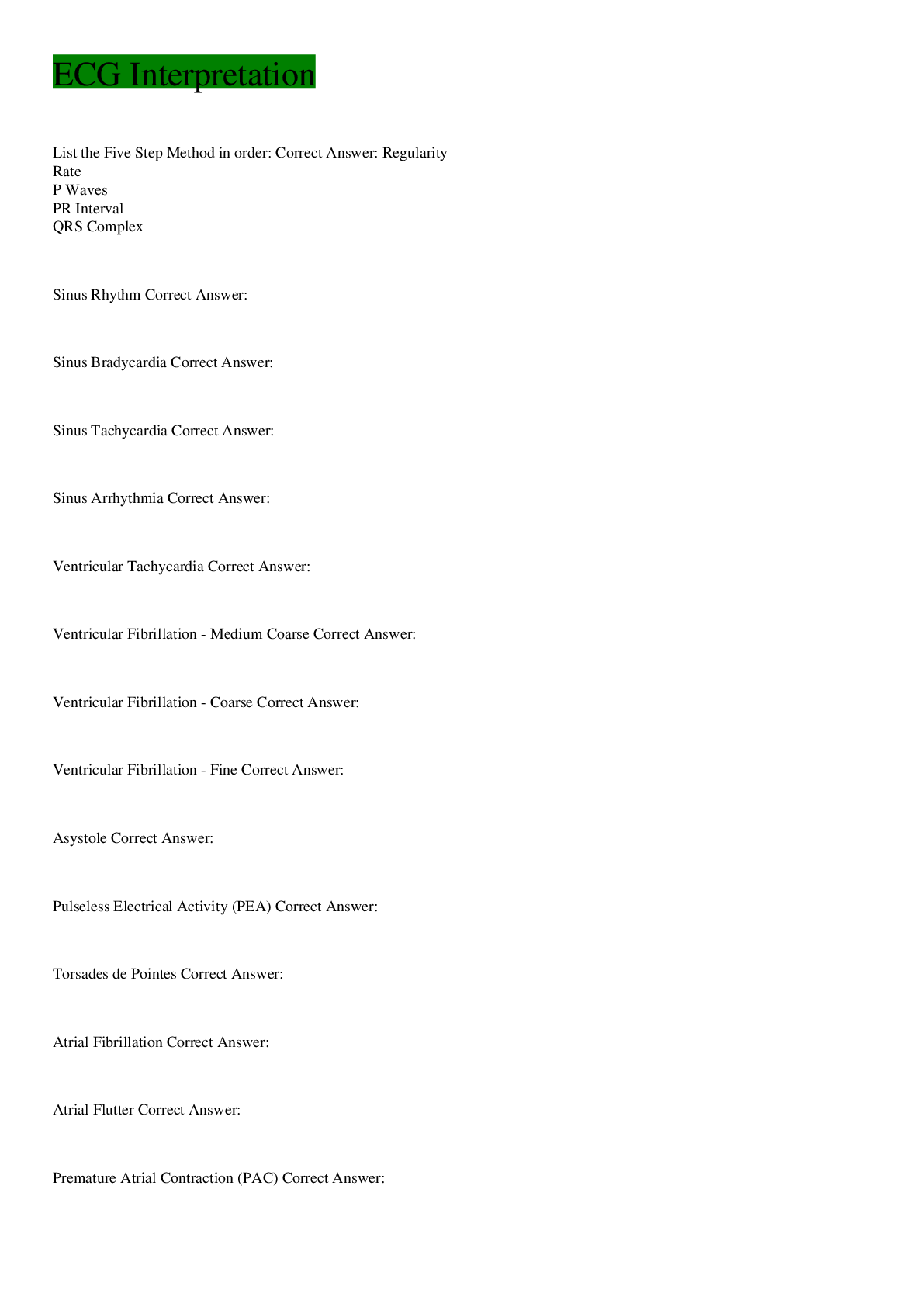
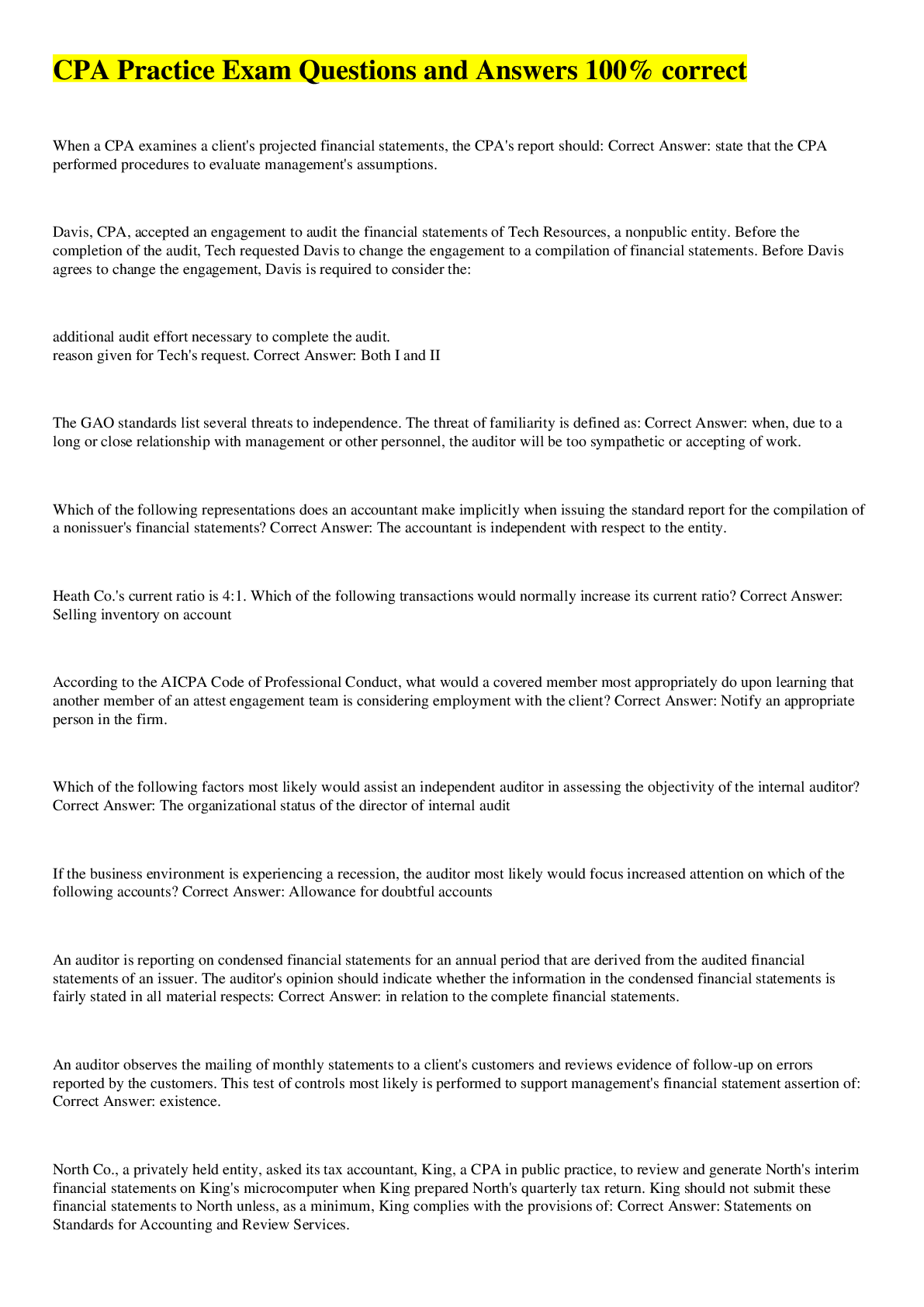
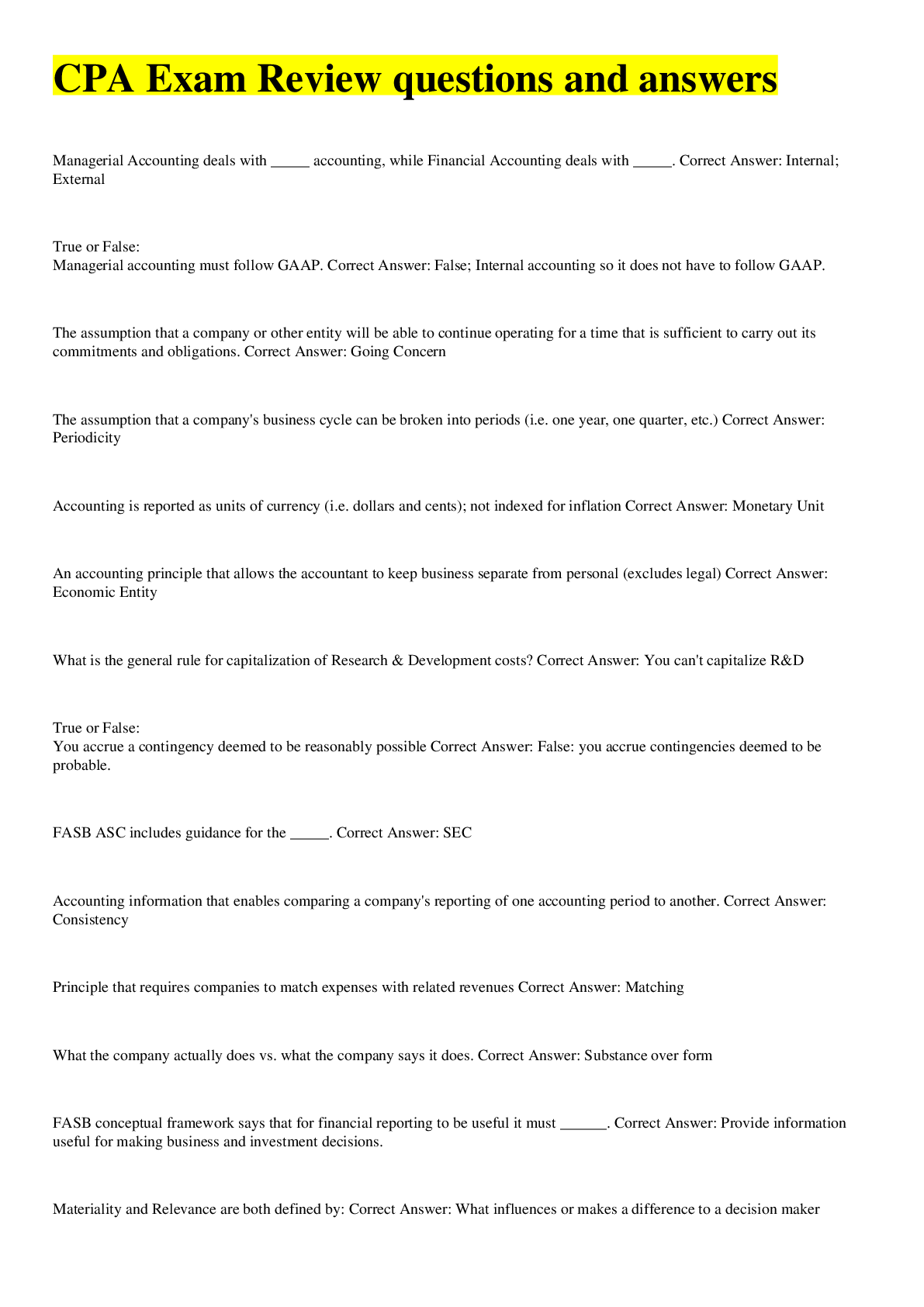


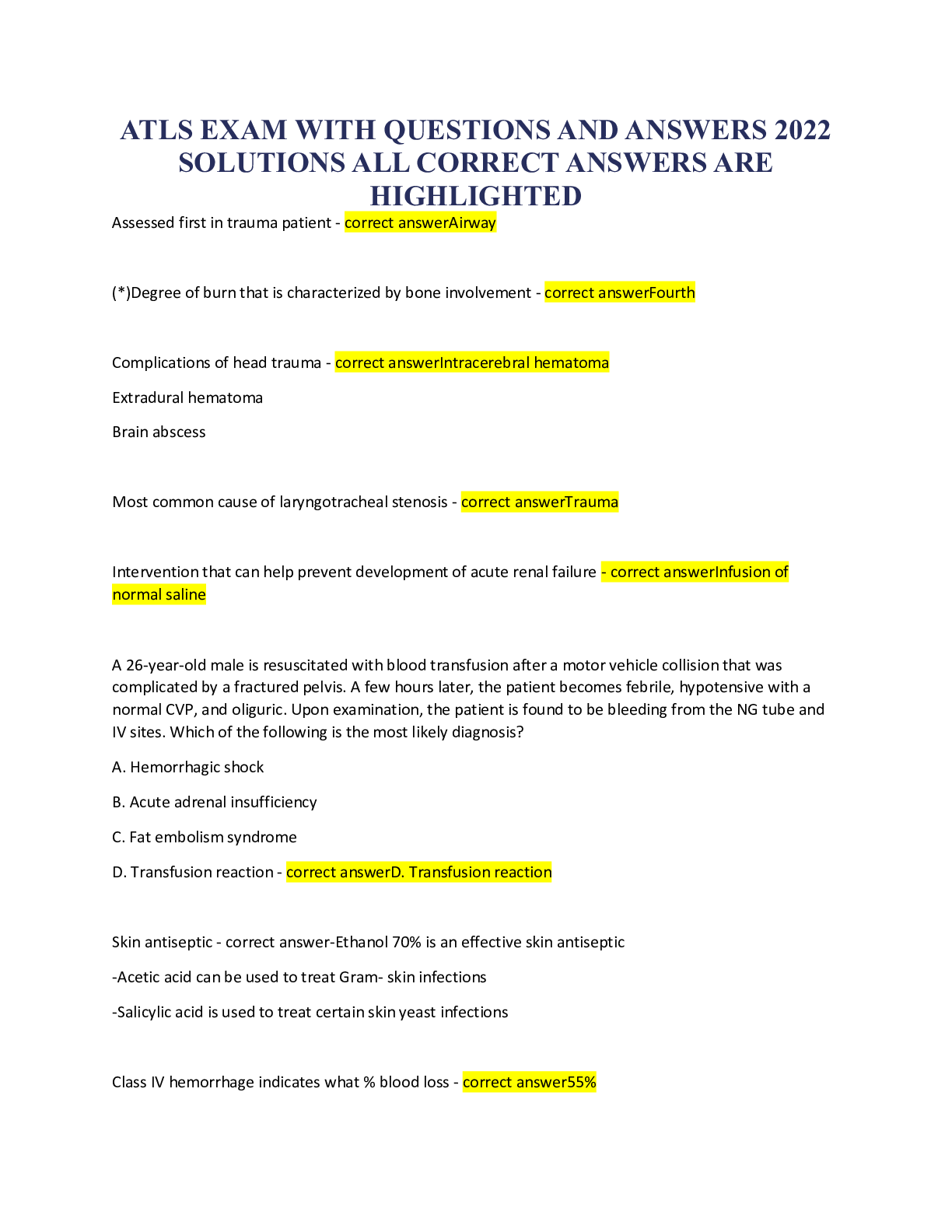

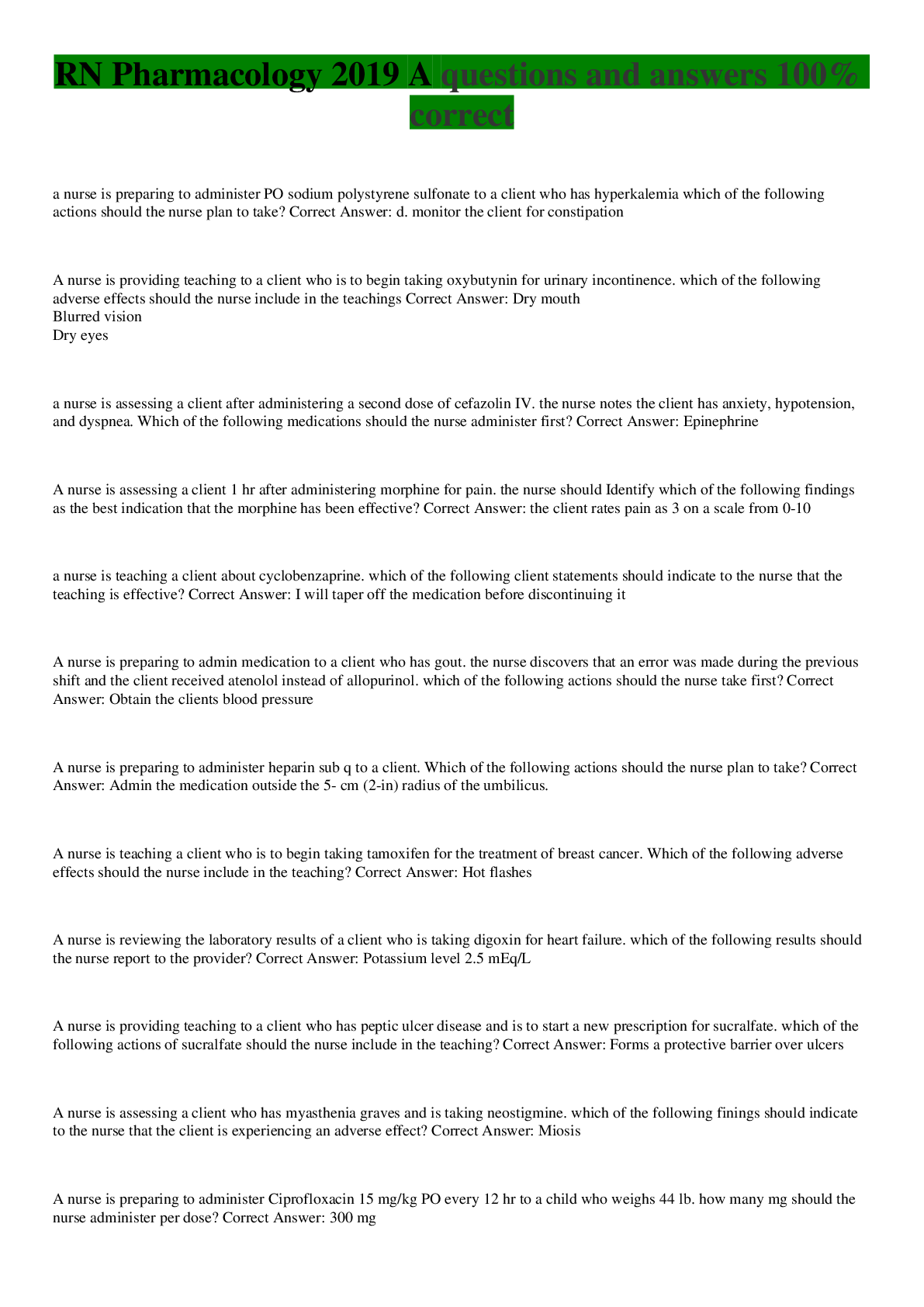
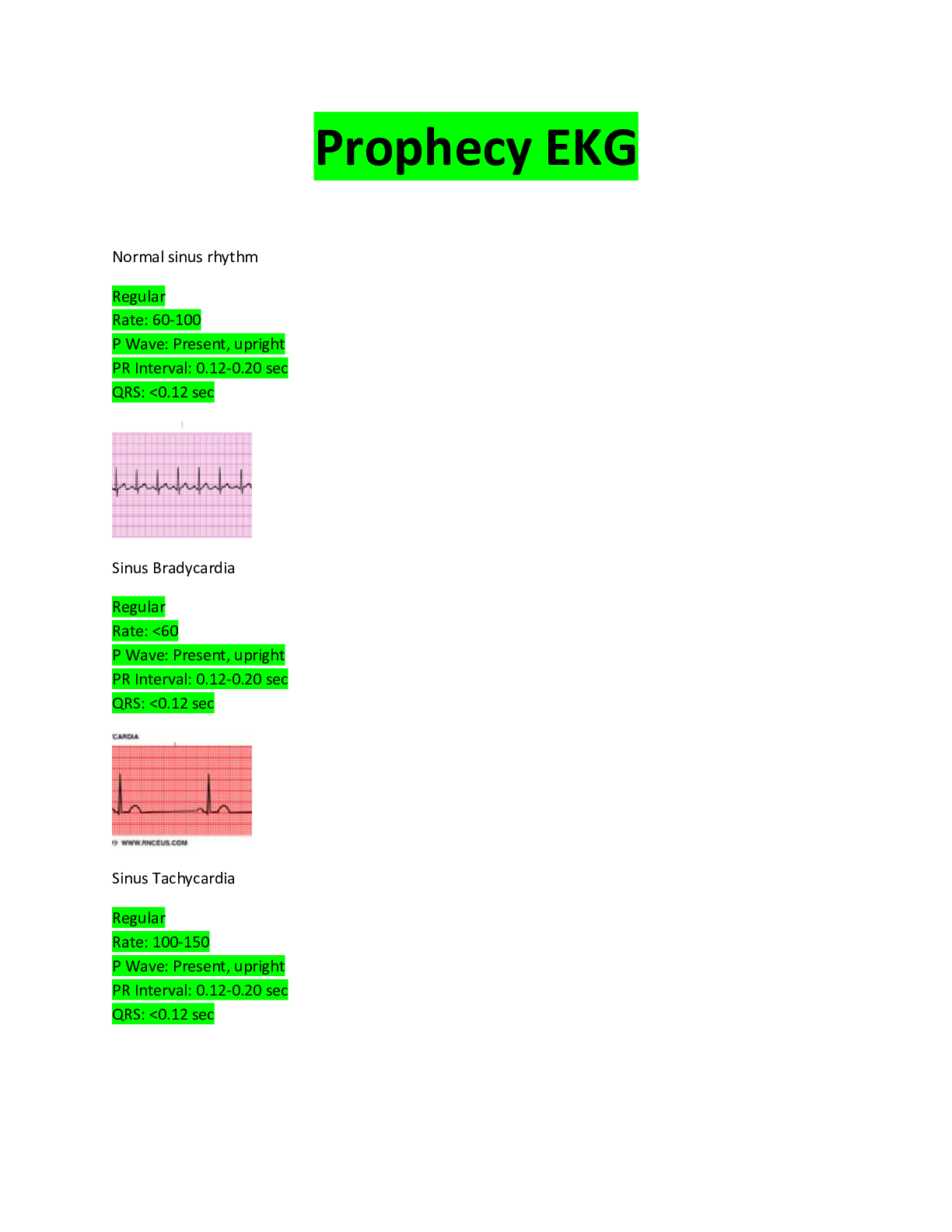

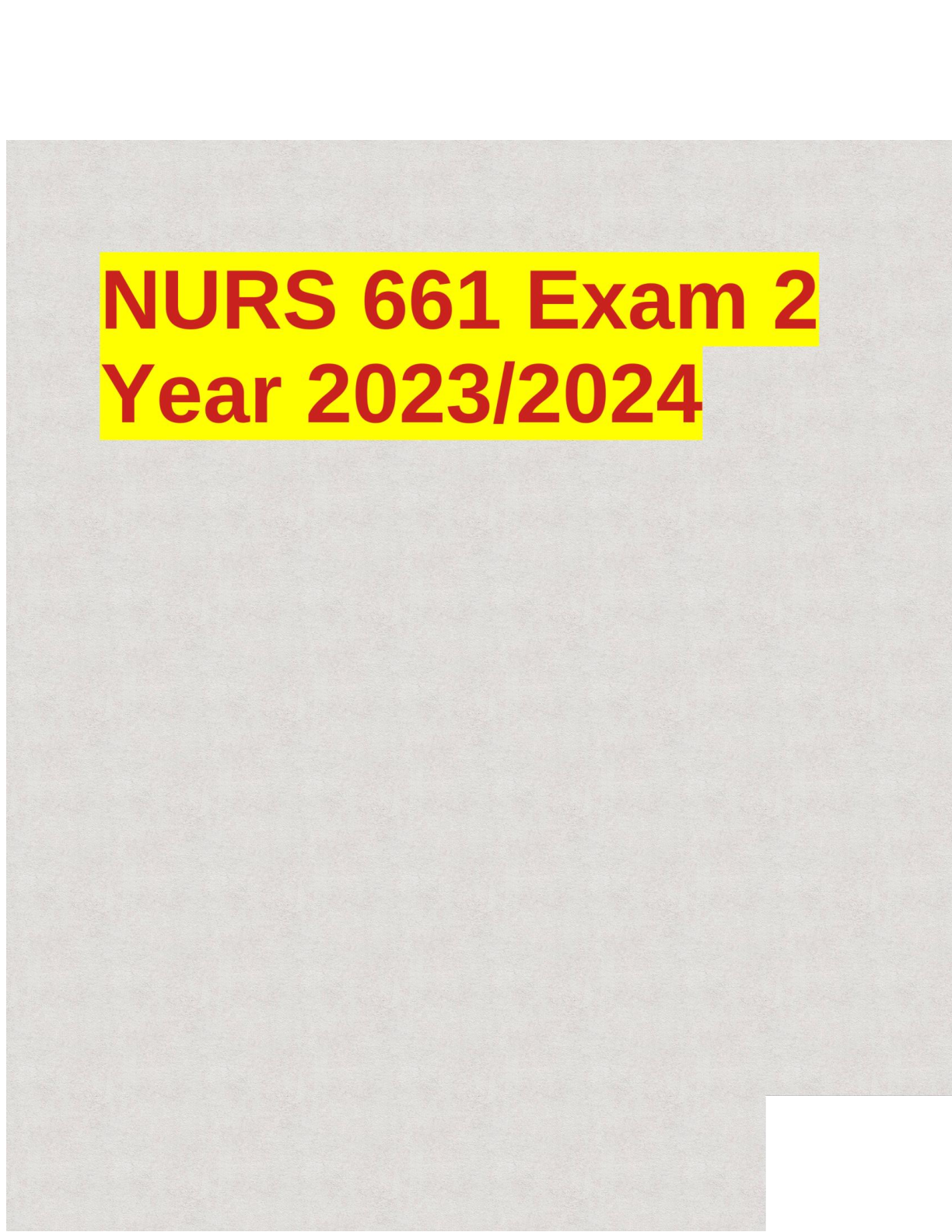


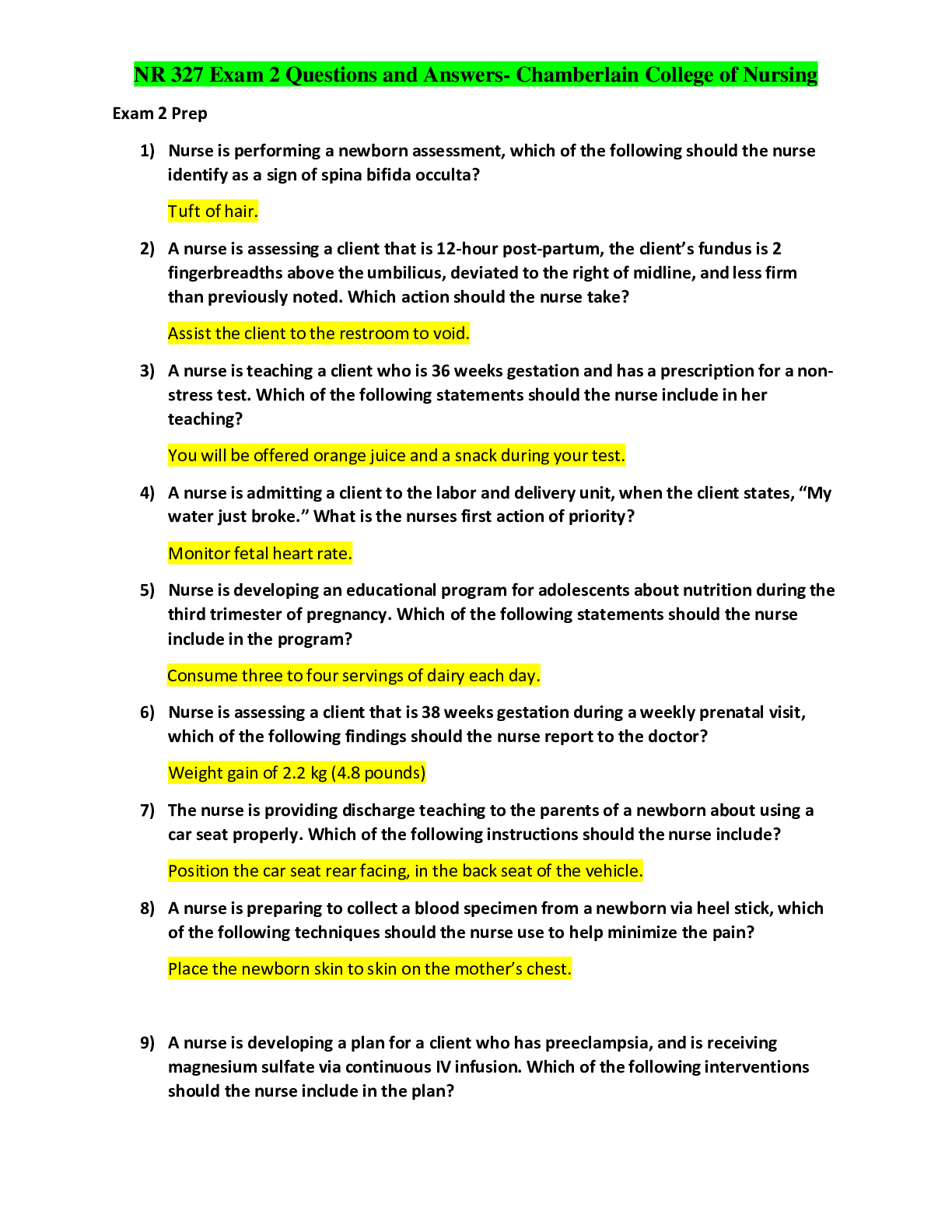
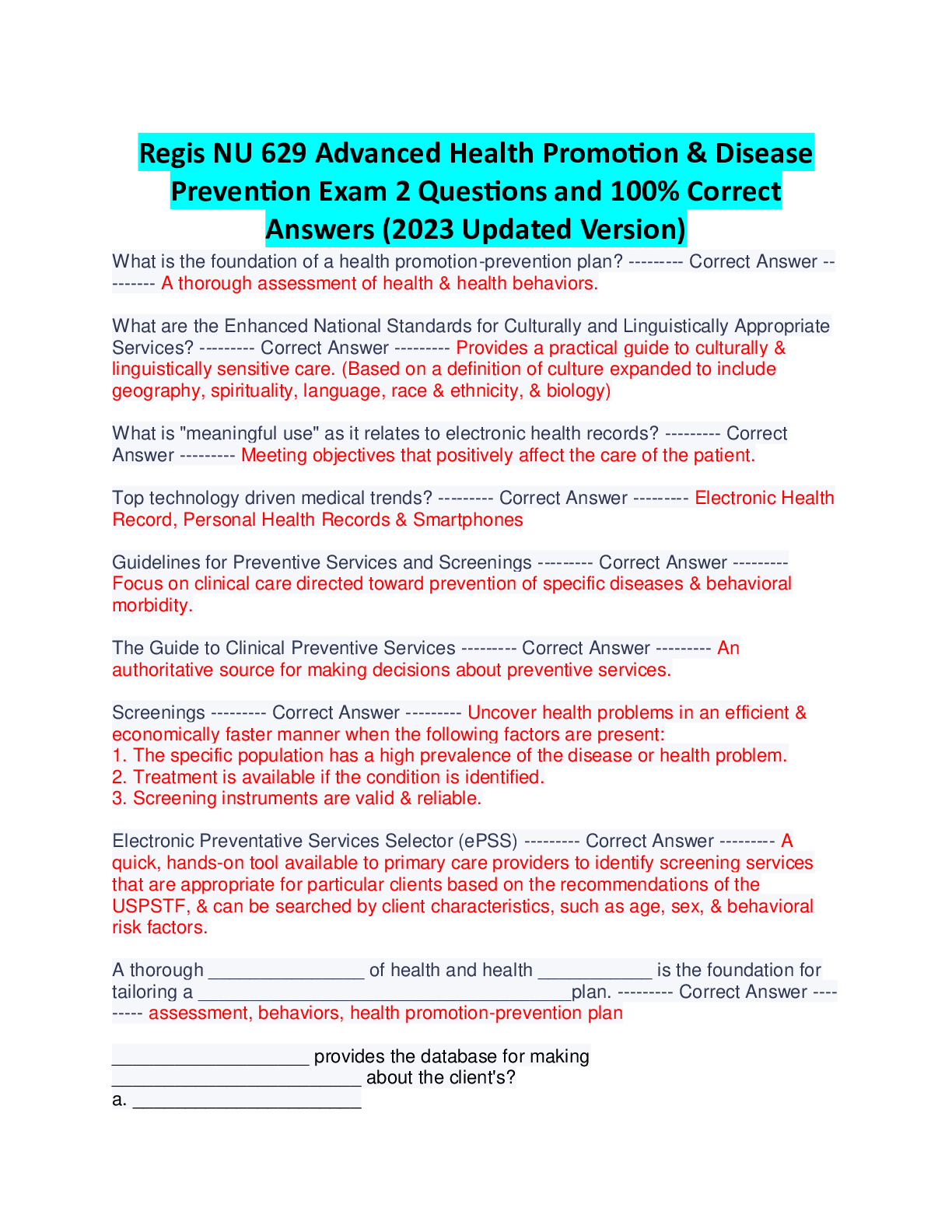
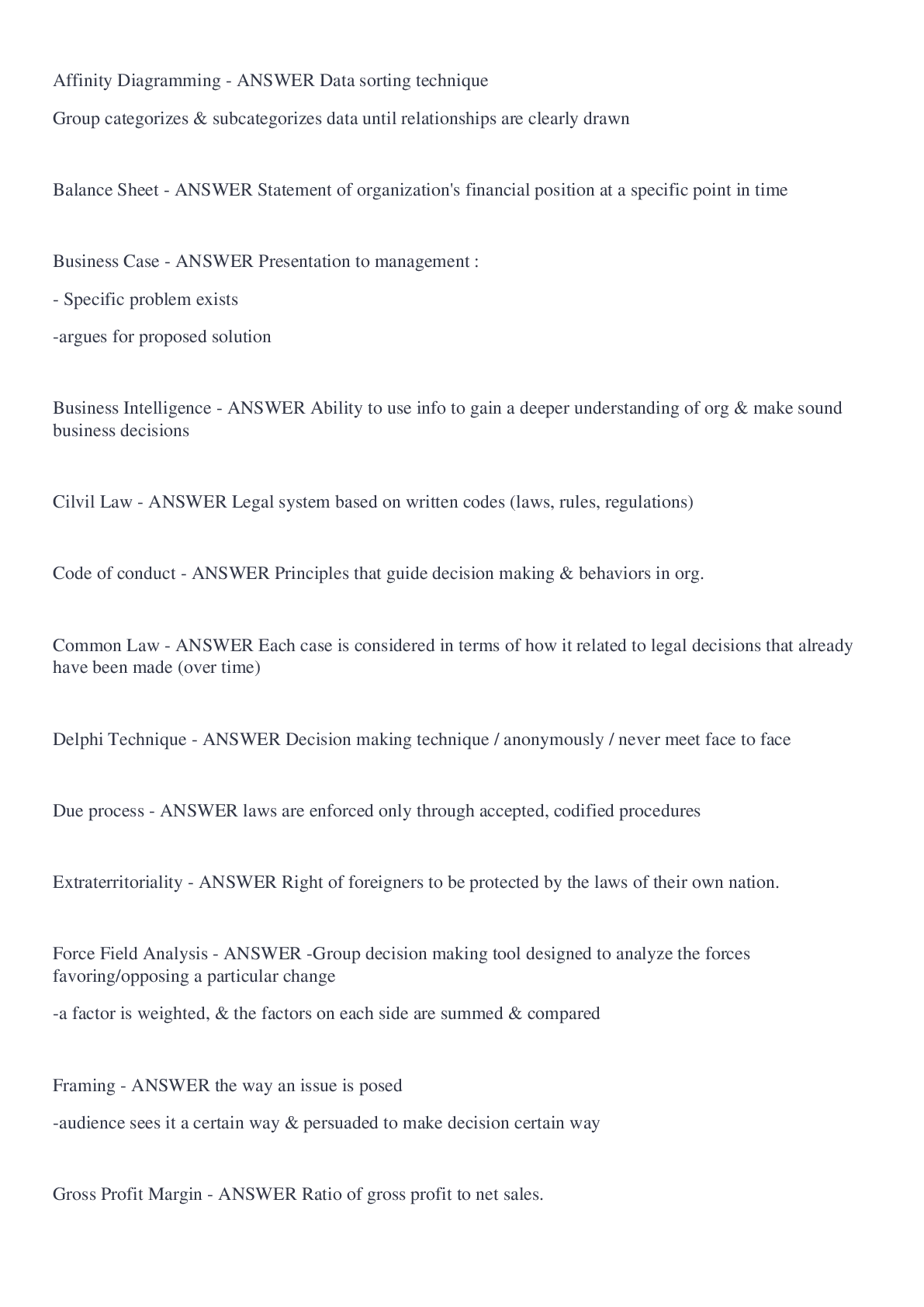
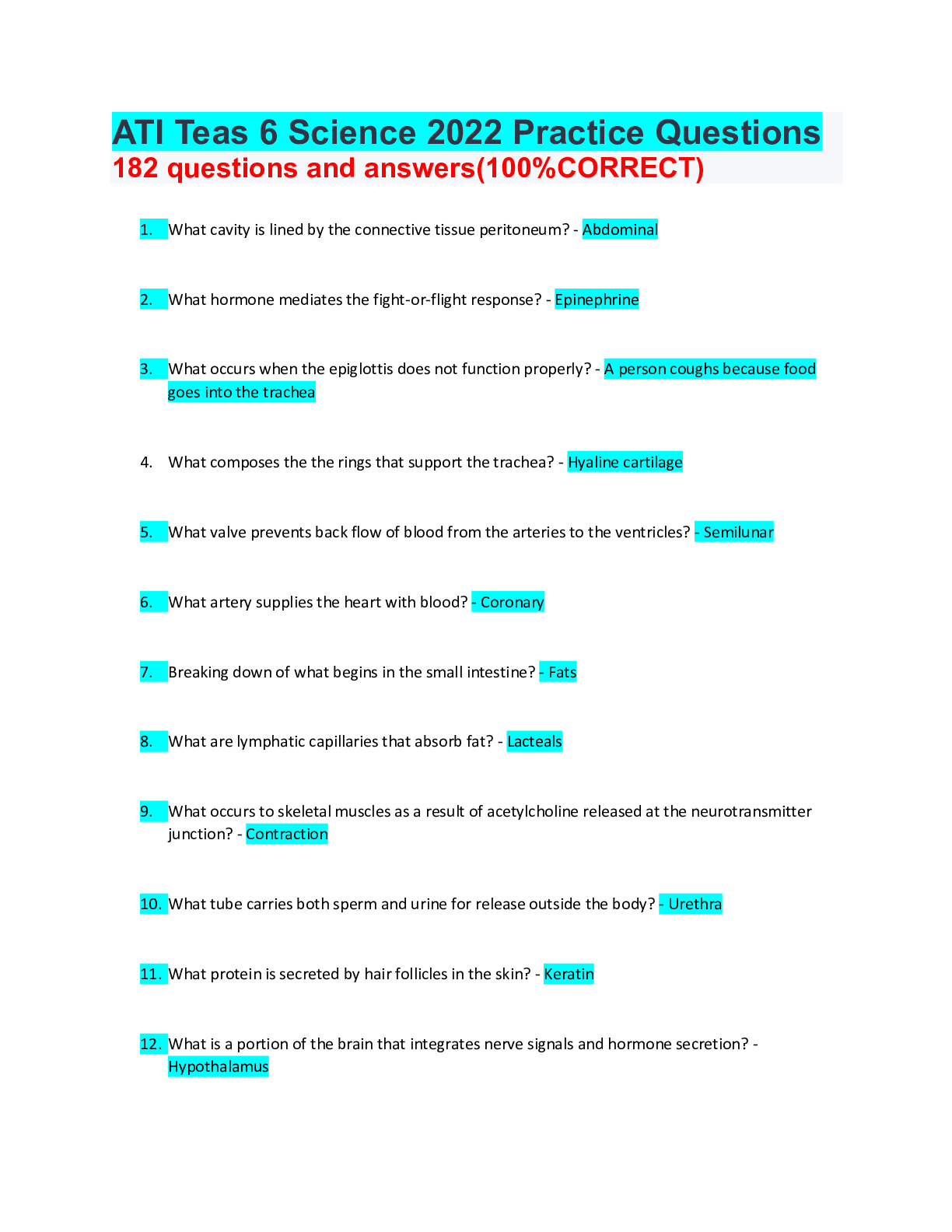
.png)
